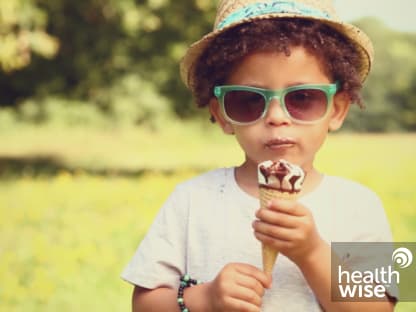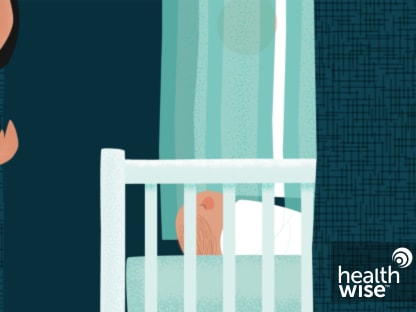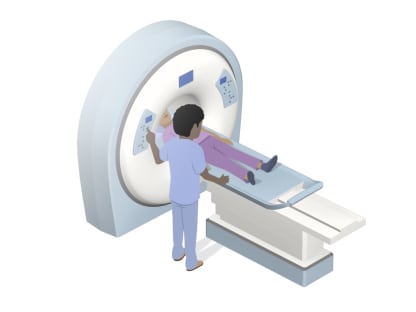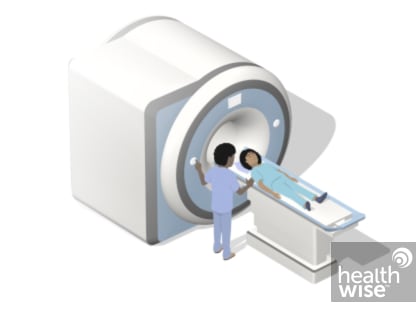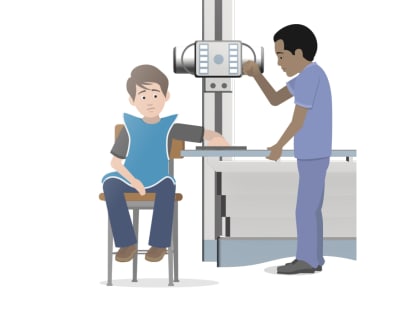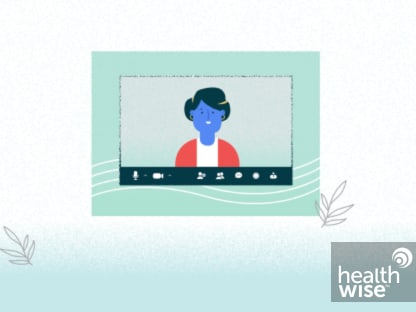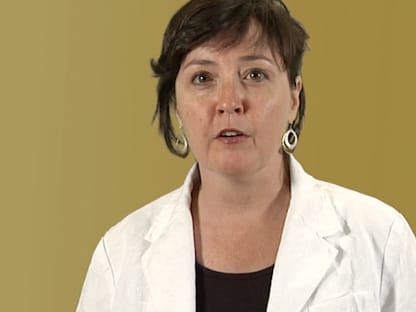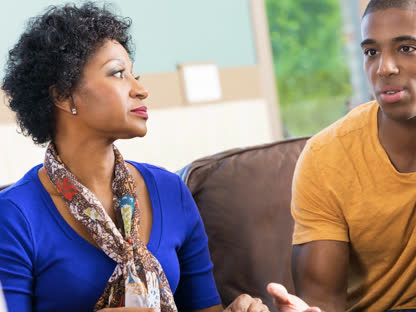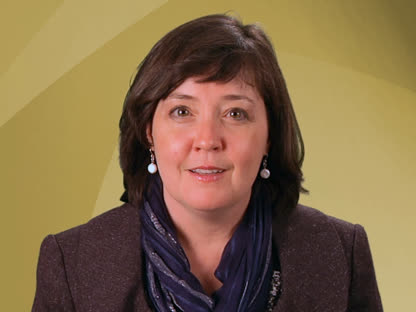Child Abuse and Neglect
Overview
What is child abuse and neglect?
Child abuse means doing something that hurts a child. Neglect means not giving or doing something that a child needs.
There are different types of abuse and neglect.
- Physical abuse.
-
This includes hitting, kicking, shaking, pinching, and burning. It may leave bruises, cuts, or other marks and cause pain, broken bones, or internal injuries.
- Emotional abuse.
-
This means saying or doing things that make a child feel unloved, unwanted, unsafe, or worthless. It can range from yelling and threatening to ignoring the child and not giving love and support. It may not leave scars you can see, but the damage to a child is just as real.
- Sexual abuse.
-
Any sexual contact between an adult and a child or between an older child and a younger child is sexual abuse. Showing pornography to a child is a type of sexual abuse.
- Neglect.
-
Neglect happens when a child does not get the shelter, schooling, clothing, medical care, or protection that the child needs. Child neglect is just as serious as abuse and is more common.
What can you do if you suspect that a child has been abused or neglected?
When you suspect a child is, or is at risk of, being abused or neglected, it is important to take action. Most abused children are not able to help themselves.
Keep in mind that by reporting your suspicions, you may prevent a child from being seriously hurt or even killed and from having lifelong emotional problems. You may be able to make reports anonymously. If you give your name, it is kept confidential.
- If a child is in immediate danger or has been badly hurt, don't wait.
Call 911 or other emergency services right away.
- Call the police or local child protective services.
You may not have to give your name. If you don't know who to call, a hospital may be able to tell you. Many of them have special programs to deal with child abuse and neglect. Childhelp, a nonprofit agency, provides telephone numbers and information about how to report suspected or observed child abuse or neglect.
- If it is your own child, get them to a safe place and stay there.
This may be the home of a close friend or family member or a domestic violence shelter. To find help in your area, call a trusted health professional, a child abuse organization, or the police.
- If you are a child or teen who is being abused, don't keep the secret.
Tell someone who can make a difference: a trusted family member, teacher, counselor, or doctor.
- Call the Childhelp National Child Abuse hotline at 1-800-4-A-CHILD (1-800-422-4453).
This hotline is open 24 hours a day, 7 days a week to offer information, advice, and support. Childhelp is a nonprofit agency. It provides telephone numbers and information about how to report suspected or observed child abuse or neglect.
Prevention
Tips for parents or caregivers
Here are some ways you can help protect your child from abuse and neglect.
- Listen to your child.
Let them know it is safe to talk about anything with you.
- Get to know your child's friends and their families.
- Screen all caregivers, such as babysitters and day care centers.
Find out what they know about child health, child development, and child care. This may include getting permission for a police background check.
- Teach your child the difference between "good touches" and "bad touches."
- Ask for help when you need it.
Call a family member or friend to give you a break if you feel overwhelmed. Find out about community resources that can help you with child care or other services. Call a doctor or local hospital for information. Look online for information and support, such as Childhelp (www.childhelp.org).
- Get help if you have ever been abused.
Having a history of being abused increases your chances of becoming an abuser. A good place to start is the Childhelp hotline at 1-800-4-A-CHILD (1-800-422-4453). You can talk to a counselor for free without giving your name.
- Learn how to handle children when they misbehave.
Avoid using physical punishment. Parenting classes are offered in most communities. Ask your doctor or call a local hospital for more information.
- Learn healthy ways to resolve conflicts and manage stress.
If there is someone in your child's life who you think could be an abuser, separate your child from that person if you can. You may be able to talk to that person and help them learn more about managing stress and about how children grow and develop.
- Remove firearms and other dangerous weapons from your home.
- Learn more about how children grow at different stages in their lives.
For example, understanding why babies cry can help you stay calm and manage your feelings as you find ways to soothe the baby.
Tips for everyone
Everyone can help prevent child abuse and neglect by showing concern for children and their well-being. Here are some ways you can help prevent abuse and neglect in children in your community.
- Learn to recognize the signs of abuse and neglect.
For example, a child may not grow as expected, may be dirty or unhealthy, or may seem fearful, anxious, or depressed.
- Be an advocate for children.
Support any group that helps parents at risk of abusing their children. Donate time, money, or goods to a local domestic violence shelter. Volunteer in child abuse programs.
- If you see abuse or neglect happening, speak up.
A child's life may depend on it.
- Get to know your neighbors and their children.
Learn the children's names, and show you care simply by waving to them or asking about how they're doing at home and school. Offer to help a new parent. Child abuse becomes less likely if parents and caregivers feel supported.
- Give parents a break.
Relieve a friend, neighbor, or relative who is feeling overwhelmed with child care and other issues.
- Encourage your community to offer services to help families who are at risk for abuse or neglect.
Learn more
- Coping Strategies to Avoid Harming a Baby
- Crying Child and Possible Abuse
- Effective Parenting: Discipline
- Growth and Development, Ages 1 to 12 Months
- Growth and Development, Ages 12 to 24 Months
- Growth and Development, Ages 2 to 5 Years
- Growth and Development, Ages 6 to 10 Years
- Growth and Development, Ages 11 to 14 Years
- Growth and Development, Ages 15 to 18 Years
- Ways to Comfort a Crying Baby
Watch
Symptoms
General symptoms
Symptoms of child abuse and neglect can be physical, psychological, or both.
Keep in mind that older children may not talk about the problem, because they fear or want to protect the offender. Or they don't believe they will be taken seriously.
Certain general symptoms that may suggest that a child is experiencing some type of abuse or neglect include:
- Slower-than-normal development.
-
The child does not show the abilities and skills normally found in other children the same age, such as starting to talk or socialize with others. Some children regress, which means they slip backward, losing skills they had before.
- Failure to thrive.
-
This is a term that means the child isn't gaining weight or height the way the child should. Although this can be caused by a medical problem, it can also be a sign that the child is not being well cared for.
- Unusual interaction with a parent.
-
The parent may not be interested in the child. Or the child may be constantly trying not to upset the parent. The child may actually be afraid of the parent.
- Mental health problems.
-
These may include low self-esteem, anxiety, depression, or thoughts of suicide.
- Suddenly getting lower grades in school.
-
For example, a child who normally does well in school suddenly gets low grades.
- Behaving in a way that isn't appropriate or that causes problems.
-
In a young child, this could mean being unusually fussy, being afraid, or not being interested in activities. Children often act out what they have seen or experienced, such as violence or sexual activity. Older children may act out in ways they haven't before, such as fighting, using drugs, or running away.
Symptoms of physical abuse
Children often get injured. But physical injuries may point to abuse when:
- It's hard to see how they could have been caused by an accident. Suspicious injuries include:
- Injuries that have a pattern, such as a straight line or a circle.
- Injuries to areas of the body that usually are protected, such as the inside of the legs and arms, the back, the genitals, and the buttocks.
- The explanation for the injury changes. Or it's not a believable explanation.
- There are signs that the child has been hurt before.
- The child doesn't receive medical care for the injury.
Symptoms of emotional abuse
Emotional abuse means doing or saying things to hurt a child emotionally. For example, the adult may say things to make the child feel unwanted or worthless. Emotional abuse may cause changes in a child's behavior. A child who is emotionally abused may:
- Not care much about what is going on around them.
- Not react normally to pain, other people, or changes in their life.
- Avoid a particular parent or caregiver.
- Act more fearful, angry, or sad than would seem normal.
- Not do well in school.
- Hurt themself on purpose.
Symptoms of sexual abuse
Sometimes children who've been sexually abused have physical symptoms, such as:
- Discomfort while sitting or using the toilet.
- Genital or anal pain or discharge.
- Blood in their underwear.
- Headaches.
- Belly pain or constipation.
But more often a child will have no physical signs of sexual abuse. Instead, you may notice changes in behavior. For example, the child may:
- Know more about sex than expected or act very sexual.
- Have nightmares or sleep problems.
- Not want to bathe or change clothes.
- Have mood changes, such as seeming depressed, anxious, angry, or fearful.
- Be more quiet or withdrawn than usual, or seem to have secrets.
- Return to behaviors they had outgrown, like bedwetting or thumb-sucking.
- Eat more or less than usual.
- Have a decline in school performance or not want to go to school.
- Act out in risky ways (for example, running away or using drugs).
- Hurt themself or attempt suicide.
Other things can cause these changes. But if you notice symptoms or behaviors that concern you, talk to your child's doctor.
The difference between sexual abuse and normal sexual play
Sexual abuse is very different from normal sexual play between children who have not reached puberty.
Normal sexual play between children of similar ages is usually touching and looking. No force is used.
Sexual abuse includes any sexual activity that the child is not able to understand or consent to. Besides obvious sexual acts, examples include fondling and showing pornography to a child.
Symptoms of neglect
Child neglect means not providing a child with basic needs. A child's general appearance, home environment, and behavior patterns can show signs of neglect.
A child who is neglected may:
- Be very underweight or overweight.
- Be developmentally delayed.
- Be sick or tired most of the time.
- Be dirty or have poor personal hygiene.
- Not have the right clothes for the weather.
Learn more
Effects on a Child's Health
Children who are abused or neglected may have long-term emotional and physical problems.
Young children are at special risk. Abuse and neglect in children younger than 7 years of age may lead to permanent behavior and personality changes. They may not grow properly. They may have learning problems. They may feel bad about themselves and not trust other people. They may be scared or angry.
Physical effects
- When physical abuse happens repeatedly or for a long time, it can cause permanent damage.
- Certain types of abuse, such as abusive head trauma, can be deadly. Some children may have permanent developmental problems or learning problems.
- A sexually abused child can get a sexually transmitted infection.
- A neglected child can have long-term health problems, such as not growing or developing normally.
Emotional effects
The mental and emotional effects depend on how bad the abuse or neglect is, how often it happens, how long it's been going on, and who the abuser is.
Mental health conditions that can be caused by abuse and neglect include:
- Anxiety.
- Substance use disorder.
- Depression.
- Borderline personality disorder. A person with this mental health condition may have trouble controlling their anger and impulses. They may have a low sense of self-worth and may have extreme worries about being abandoned.
- Post-traumatic stress disorder.
- Suicide or suicidal thoughts.
- Dissociation. With this condition, the mind separates itself from an event or the environment so it can maintain some degree of order and sense.
- Eating disorders.
Other emotional effects include:
- Low self-esteem. Children often unconsciously blame themselves and grow up with a poor self-image. This affects their relationships with others.
- Anger, hostility, or criminal behavior.
- Negative feelings. A person with a history of abuse or neglect may have trouble dealing with normal struggles.
- Emotional detachment. A person may have problems making friends. This can lead to feeling isolated and alone. Children may not learn how to feel sympathy for others.
- Impulsiveness. The person acts without thinking about the consequences. They may take risks, such as driving dangerously.
- Sexual problems. Abused or neglected children, especially those who are sexually abused, often have problems developing healthy feelings about sex as they reach adolescence and adulthood. Some may be overly active sexually. Others may be too afraid to be intimate with anyone.
Children who are abused or neglected are more likely to abuse other children and siblings and, later in life, their own children or elderly parents. They are also more likely to become involved in crime.
Children often believe that abuse or neglect is their fault. They may think that they did something wrong and deserve what happened. It is up to adults who care to protect them.
Learn more
When to Call a Doctor
Call 911 anytime you think a child may need emergency care. For example, call if:
- You witness child sexual or physical abuse.
- You believe that a child is in immediate danger.
Call your doctor now or seek immediate medical care if:
- You think that a child may be in danger from sexual or physical abuse. You can also call your local police or child protection services. Another resource to call if you are concerned about a child's well-being is the Childhelp hotline at 1-800-4-A-CHILD (1-800-422-4453).
Contact your doctor if:
- A child tells you about being abused.
- You see possible signs of sexual or physical abuse.
Exams and Tests
Here are some ways that child abuse and neglect are diagnosed.
Physical exam
An abused or neglected child who is taken to a doctor will first have a general physical exam. The doctor will review the child's medical history and ask parents or caregivers questions about the child's condition.
A child who is able to talk may be separated from the caregiver during the interview.
The law requires doctors to consider the possibility of abuse or neglect. Along with seeing signs of physical abuse or neglect, a doctor may become suspicious when:
- The injury is unusual or is not likely to be an accident, especially for the child's age.
- The parents or caregivers don't have a good explanation, or the explanation changes.
- The parents or caregivers say no one saw the injury happen.
- Medical records show that similar injuries or patterns of neglect have occurred in the past.
- The parents or caregivers put off taking the child to the doctor without a good reason.
- The doctor finds signs of sexual abuse.
Other children in the care of the same person may also be examined and have X-rays if police or doctors think it's needed.
Common tests
Tests that are often used to help confirm or rule out abuse or neglect include:
- Imaging tests.
-
Tests such as an X-ray, CT scan, or MRI can help determine whether a child's injuries include any broken bones. Some tests may also show signs of past injuries.
- Blood tests.
-
Blood tests can be used to look for signs of organ damage.
- Urinalysis.
-
This test checks for blood in the urine, which can be a sign of internal injuries.
- Specialized lab tests.
-
For example, the doctor may take skin or hair samples or samples of fluids in or around the vagina to be tested.
- Lumbar puncture.
-
This is also called a spinal tap. It may reveal blood from a brain injury.
- Eye exam.
-
This test is done to find out if damage has occurred that points to abusive head trauma.
Other tests
Other exams and tests depend on the specific medical problem suspected or observed. For example:
- Psychological testing may be requested for some children.
- Victims of suspected sexual abuse may be tested for sexually transmitted infections.
Tracking a child's injuries
Information about a child's injuries is carefully recorded. A detailed account of the injuries goes into the child's permanent health record.
This record usually includes photographs and drawings of the injuries.
Measurements such as weight, height, and head circumference are also taken and recorded to help establish a child's baseline growth pattern. Recording these measurements on growth charts can help identify failure to thrive that sometimes is related to neglect.
Learn more
Watch
Treatment Overview
Treatment for the child
Early treatment gives an abused or neglected child the best chance for recovery.
The first step is to provide a safe environment to prevent further harm. The sooner this happens, the better the child's chance for physical and emotional recovery. This includes separating the child, as well as any other children in the household, from the person suspected of abuse.
Any physical injuries will be treated, either in a hospital or at a doctor's office, depending on how serious they are.
Counseling is always recommended for abused or neglected children. It usually focuses on:
- How they feel about themselves.
- Their past experiences.
- Fears and concerns they may have about the present and future.
For very young children, counseling may involve play therapy.
Learn more
Watch
How Child Abuse Is Reported
The law requires certain people, such as doctors, social workers, and teachers, to report suspected child abuse and neglect. Usually the report is made to the police or to child welfare or child protection agencies. In some areas the law requires all citizens to report suspected abuse or neglect.
But many people don't know what to do about suspected abuse, because they:
- Are not sure what is considered abuse and neglect.
- Are afraid they'll cause the child more harm.
- Are worried that they will falsely accuse a parent or caregiver.
- Are afraid the abuser will hurt or harass them.
- Are worried about being sued.
If you're unsure about what to do, here are some things to keep in mind about how the law works.
- You may be able to make reports anonymously. If you give your name, it is kept confidential.
- You can't be sued successfully if you make a report in good faith.
- Police and child welfare workers investigate the report. If the government believes a crime has been committed, the suspected abuser is tried and, if found guilty, sentenced.
- Investigators sometimes can't find enough evidence to charge someone with a crime. In this case, parents or caregivers may be referred to social services to lower the child's risk of being hurt.
Related Information
Credits
Current as of: October 1, 2025
Author: Ignite Healthwise, LLC Staff
Clinical Review Board
All Ignite Healthwise, LLC education is reviewed by a team that includes physicians, nurses, advanced practitioners, registered dieticians, and other healthcare professionals.
Current as of: October 1, 2025
Author: Ignite Healthwise, LLC Staff
Clinical Review Board
All Ignite Healthwise, LLC education is reviewed by a team that includes physicians, nurses, advanced practitioners, registered dieticians, and other healthcare professionals.
